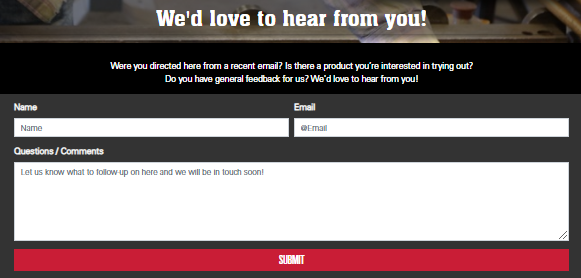08 Apr 04/08/2020
Heat Stress and PPE: Hi-Vis Wicking T-Shirts and Breathable Ultra-Lightweight FR Clothing
Have you ever started to feel a little lightheaded or sick while working in hot conditions? It's not uncommon to get a bit overheated when you're working with hot objects or in hot or humid environments. Outdoor workers who have experienced heat stress know this feeling firsthand. They also understand the importance of preventing heat stress to avoid the heat-related complications that may come with it. As temperatures rise during the summer, the risk of heat-related injuries becomes even more significant.

Heat Stress
According to OSHA, millions of workers are exposed to heat at work annually, which makes heat stress a vital safety topic, especially as the hotter summer months arrive. However, it's not only warm outside temperatures that impact workers, but temperatures in working conditions and job environments that can quickly soar. Temperature affects workers, and extreme temperatures can lead to injuries, illnesses, and even death. According to the Bureau of Labor Statistics (BLS), exposure to environmental heat in 2015 led to 37 work-related deaths and 2,830 nonfatal occupational injuries. The months of June through September saw the highest number of fatal heat-related work injuries, with 33 of the 37 incidents happening in that four-month span. OSHA highlights that 50% to 70% of the heat-related fatalities that occur is because the body doesn't have a suitable time to build up enough heat tolerance, known as acclimation.
Triple-vented PPE is designed to breathe in the hottest of conditions.
For those who can't avoid working around heat, taking necessary precautions can help them prevent getting sick, or worse. One of those precautions is wearing comfortable personal protective equipment (PPE), specifically clothing, that doesn't stop the body's ability to lose excess heat. MCR Safety is proud to offer such PPE solutions in the form of breathable mesh gloves, hi-vis wicking t-shirts, and breathable, ultra-lightweight FR clothing. Our products are specially designed with your safety in mind.
We tackle all things related to heat stress below and highlight appropriate PPE options, too.
What is heat stress?

The official heat stress definition from OSHA is "the net heat load to which a worker is exposed." Physical exertion, environmental factors, and clothing worn all contribute to potential heat stress. Let's expand on this a little bit more.
Heat stress is caused when the body is unable to get rid of excess heat and therefore, cannot cool itself. This may be as a result of the physical exertion, environmental factors, and clothing mentioned above. Just like an overheated vehicle engine, your body can get overheated, too, and this heat stress may cause you to feel sick or disoriented. If not treated immediately, heat stress can cause the body to begin to shut down and may eventually lead to death.
According to OSHA, there are two primary sources of heat on the job:
- Environmental conditions, including air temperature, humidity, air movement, and radiant heat. These environmental conditions may be present indoors or outdoors, as is the case with construction workers.
- Internal heat generated by physical labor is another source, such as production occupations, handling tools, and equipment.
Individuals who perform strenuous physical activities and work in environments where they are subjected to high temperatures and humidity, or those who work with radiant heat sources, are at the highest risk for heat stress.
How the Body Deals With Heat Stress

When appropriately dressed, most people feel comfortable in air temperatures ranging from 68-80℉, with relative humidity at no more than 60%. However, when the environment you're in warms up, so does your body, which can impact your comfort and your safety. Of course, higher temperatures and humidity may be uncomfortable, but if they get too high, conditions become dangerous. The average human body temperature is 98.6℉, but may safely rise or fall within a single degree throughout the day due to physical activity or emotional state. More drastic changes in body temperature occur due to illness or dangerous environmental conditions.
The primary source of body heat is from the body's metabolic heat, or its internal temperature. Metabolic heat It is created inside the body from internal chemical processes, hormone activity, digestion, and from the energy generated by physical activity. Usually, metabolic heat is regulated as the body exchanges heat with the surrounding environment. It can do this in three ways:
- Conduction: heat is exchanged by direct contact with objects, such as grabbing a hot pan from the stove, which conducts more heat into the body as the body responds.
- Radiation: heat from surrounding hot objects, such as a furnace and steam pipes, is transferred to those in close proximity, even without direct contact between them.
- Convection: heat is exchanged between the body and the surrounding air and environment. The body's temperature increases from exposure to hot air, like during the summer, and loses heat, such as from a fan's breeze.

When exposed to lengthy periods of hot temperatures, the body increases sweat to maintain ones' internal temperature. Then, the evaporation of sweat from the skin cools the body. However, in hot and humid conditions, cooling is limited as the air can't take on more moisture, and evaporation is limited. Cooling is considerably higher when evaporation rates increase, and lower humidity is present.
You run into trouble when your environment is too hot, and the rate of "heat gain" exceeds the rate of "heat loss." This causes your body temperature to rise, and you begin experiencing symptoms of heat stress as your body struggles to cope.
Working in Hot Outdoor Environments

Millions of American workers are subject to hot work environments. While some of these jobs are indoors, where it's easier to regulate indoor temperatures with proper ventilation and air conditioning, many are outdoors and subject to Mother Nature's elements. It is impossible to control outdoor temperatures for those who work outside, and these workers are at higher risk for heat-related illnesses.
Each year, thousands of workers become sick from heat exposure. Workers in the following industries are at the highest risk of heat-related illness:
- Agriculture – most farmwork is performed outdoors, where climate can't be controlled.
- Construction – examples include road, roofing, and other outdoor projects.
- Landscaping – workers are physically active, working outside to keep properties maintained.
- Mail and package delivery – lots of walking involved, which increase internal heat; add on walking on a sunny day with high temps and/or high humidity, and the danger increases.
- Oil and gas well operations – working in the hot Texas summer, oil and gas workers face dangerous conditions, both heat-related and not heat-related.
The list could go on and on. It is important to note that overheating can happen during any season if the conditions are right. Strenuous activity and improper clothing can cause overheating even in cold or moderate temperatures. The best thing one can do is be aware of the protective measures to take, which includes wearing the appropriate PPE.
Who else is prone to heat stress?

If you're thinking that by not working outside you've eliminated heat stress risks, think again. The BLS keeps track of the occupations that sustain the most heat-related injuries and not all of them include outdoor work environments. Check out the following chart.

Bureau of Labor Statistics, U.S. Department of Labor, The Economics Daily, Work injuries in the heat in 2015 on the Internet at https://www.bls.gov/opub/ted/2017/work-injuries-in-the-heat-in-2015.htm
Transportation and material moving occupations took up the lion's share of injuries in 2015 with 720 nonfatal cases, approximately 25% of all injuries resulting from exposure to environmental heat. This occupation involves both potentially hot working conditions and the internal heat created by the physical labor required. So, it's clear as to why this occupation ranks so high in heat-related injuries. However, as you look over the data, you'll notice production and maintenance, whose trades work a lot inside, also experience nonfatal heat-related injuries. This is likely a result of the physical labor involved. The BLS also provides some additional heat stress data on worker injuries in specific states.

Source: Bureau of Labor Statistics
If you work in California, Texas, Georgia, South Carolina, or Kansas, you will want to pay close attention to the following sections.
We covered above those who work in hot outdoor environments. Here are some other indoor environments where heat stress is a concern:
- Manufacturing - working around furnaces
- Steel Mills - one of the hottest working conditions known
- Utilities - working around boiler rooms
OSHA Heat Stress and Heat Index

Hotter air temperature alone doesn't paint the entire picture of overall heat danger. Those who find themselves working outdoors in warm weather are affected by both air temperature and humidity. Humidity levels of 60% or more hinders sweat evaporation, denying one's body the ability to cool itself. "With this in mind, OSHA cautions workers to consider the heat index of their work environments. The heat index generates a single value, taking both temperature and humidity into account. The higher the index number, the hotter the weather feels, which means an increased risk to workers. When the heat index climbs to 90°F or more, one should start taking precautions, whether working indoors or out.


OSHA's Heat Index and Heat Stress Quick Card
OSHA is the leading expert and go-to source for virtually anything workplace-safety related, including heat stress. Here are some additional resources from OSHA:
- https://www.osha.gov/SLTC/heatillness/heat_index/
- OSHA Safety and Health Topic: Occupational Heat Exposure
- The OSHA-NIOSH Heat Safety Tool for Android
- The OSHA-NIOSH Heat Safety Tool for iPhone
- OSHA Quick Card: Protecting Workers from Heat Stress
- OSHA Fact Sheet: Protecting Workers from the Effects of Heat
- OSHA Heat Stress Poster
- Heat Stress Hazard Recognition
Wet Bulb Globe Temperature (WBGT)

The Wet Bulb Globe Temperature (WBGT) measures heat stress in direct sunlight. It takes into account temperature, humidity, wind speed, sun angle, and cloud cover. This approach differs from the heat index, which is not measured in the sun and doesn't account for wind, cloud cover, or sun angle. Military agencies and OSHA use the WBGT as a guide to managing workload in direct sunlight.

WBGT encompasses more variables compared to the Heat Index.
Heat Index and WBGT Calculator:
Visit the National Weather Service here to obtain the WBGT and Heat Index for your area.
Heat Stress Symptoms and Signs of Heat Stress

When you begin suffering from heat stress, your body will let you know it's in distress with any number of symptoms. Some of the most common symptoms of heat stress include:
- Confusion
- Dizziness
- Fatigue
- Headache
- Pale skin
- Profuse sweating
- Rapid heartbeat
- Dark-colored urine from dehydration
- Muscle or abdominal cramps
- Nausea, vomiting, or diarrhea
- Fainting

If you begin experiencing any of the above symptoms, or you notice a coworker has developed traits of heat stress, stop work, and seek treatment immediately. If not treated, heat stress can be fatal.
Heat Stress Treatment

WebMD is one of the top healthcare websites, providing excellent insight into human health and well-being. In the event that you or someone you know begins showing signs of heat stress or heat exhaustion, it is critical to get them out of the heat immediately. They need to rest and if at all possible, to do so in an air-conditioned room. After getting out of the hot environment, it is critical to get medical help as soon as possible. Here are some additional recommendations:
- Loosen or remove unnecessary garments;
- Apply fans and cold towels or ice packs; and
- Little by little, give the person water, as long as they're not vomiting.
Within 15 minutes, if none of the above cooling methods have worked, WebMd suggests seeking emergency medical assistance, as untreated heat exhaustion can develop into a heat stroke and potentially be fatal.
Heat Stress Prevention

Preventing heat stress in workers is both imperative and achievable. To avoid excessive heat gain and heat stress, you can maximize your body's ability to cool off and regulate its temperature in a variety of ways. Before we highlight the PPE workers should consider wearing in hot conditions, let's highlight some daily actions that will help. The CDC recommends a wide range of activities that will help prevent heat stress. Employers should provide training to workers so they understand what heat stress is, how it affects their health and safety, the signs of heat stress, and how it can be prevented.
Before we highlight PPE that workers might wear during hot summer months to lessen the likelihood of heat stress, let's highlight some daily actions that will help, too.
- Use fans for ventilation and cooling, especially when wearing personal protective equipment (PPE).
- Wear a hat in direct sunshine, like an MCR Safety Boonie hat.
- Wear loose-fitting clothing; if you operate machinery or work around equipment that is in movement, make sure that your clothing is not so loose that it could get caught in the machine and cause injury.
- Plan strenuous work for cooler parts of the day, like early in the morning or later in the afternoon, if possible.
- Locate the closest shady place and schedule breaks throughout the day.
- Drink lots of water.

The U.S. Army Public Health Center's chart of work/rest times and fluid replacement volumes for each heat category.
In the above chart, you'll notice it suggests adding 5°F to the WBGT index if wearing body armor. Most PPE found in industrial settings doesn't compare to the body armor worn by the military. However, PPE does add some weight and breathability restrictions. The following sections will highlight the safety equipment that can help keep you stay cool and relaxed without sacrificing your on-the-job safety.
Additional Resources
https://www.cdc.gov/niosh/docs/2011-174/
PPE – Personal Protective Equipment

Unfortunately, safety hazards remain regardless of the weather. PPE is a worker's last defense for staying safe, cool, and comfortable. However, some PPE isn't intended for hotter worker conditions. In fact, the Mayo Clinic stresses that heat stress appears by wearing clothing that doesn't allow sweat to evaporate quickly. This is often the case with PPE. But there are alternatives! Below, we highlight three products that are designed to breathe without sacrificing the protection you deserve.
Breathable Nitrile Foam Gloves & Mesh Leather Work Gloves

When the temperatures rise, and you're actively using your hands, consider wearing gloves that allow hot trapped air to escape. Our Ninja™ BNF gloves do just that. The nitrile polymer used in these gloves provides greater comfort due to its excellent breathability, which allows the glove to better dissipate body heat. If you want even more airflow and a little more rugged protection, consider wearing a mesh-backed leather work glove, like our 34111.
Hi-Vis Moisture-Wicking T-Shirts

T-shirts are considered by many to be more comfortable to wear than safety vests. When summer rolls around, nothing could be more accurate. The last thing you want to do is continue adding layers of garments for visibility and safety. MCR Safety offers users a wide range of shirt options, including styles made from birdseye mesh wicking material. Shirts made with this fabric technology wick moisture from the body and dry quicker. They easily allow perspiration to be drawn away from the skin to the exterior of the shirt, providing wearers additional comfort when working. And because they are made using hi-vis fabrics and details, you may not need to wear a safety vest on top of it to be seen easily.
Hi-Vis Shirts
Breathable Ultra-Lightweight FR Clothing
FR clothing is meant to protect workers from thermal hazards like flames, sparks, arc flashes, chemicals, and hot liquid spatters. It does not ignite or melt, giving you time to step away from danger unscathed. However, as FR protects against hazards where heat exists, such as around sparks, when outside temperatures rise in environments already prone to heat, the situation goes from bad to worse. In this situation, one of the best ways to assist your body to regulate its temperature and avoid heat stress is by wearing lightweight, breathable workwear that will continue to protect you from the heat hazards at work.

Triple Vented FR Clothing powered by Summit Breeze® Technology
Weighing in at only 5.5 ounces, we recommend our lineup of Summit Breeze® garments for optimum comfort and protection in hot environments, especially when there are flame hazards present. Summit Breeze® Technology safeguards workers from radiant heat while allowing their bodies to follow natural cooling processes. The protection you enjoy from a Summit Breeze® FR garment is two-fold. While it prevents burns from fire and extreme temperatures, it also helps prevent overheating and heat stress. This is because all FR clothing made with this technology incorporate patented triple-vented FR protection, with mesh vents located in the back and underarms to allow for maximum airflow and sweat evaporation to aid in heat loss when you're working hard.
Even if you don't work in a job that requires protection from both burns and heat stress, nothing compares to a product that is triple-vented and allows air in from three access points. Plus, products made with Summit Breeze® technology are built to last, feel comfortable, and look great.
When You Can't Get Out of the Heat, Get into Summit Breeze®

While there are many precautions you should take to avoid heat stress, MCR Safety makes it easy to outfit yourself with breathable PPE by offering a wide selection of options. With more cooling, breathable garments, and gloves, you can go to work with peace of mind knowing that your workwear is designed to keep you safe from any heat hazard you may encounter.
We welcome any comments, feedback, or suggestions for how we can best protect people at work.
For over 45 years, MCR Safety has proven to be a world leader in gloves, glasses, and garments. Whether it's on the shop floor, an oil rig, or a construction site, we are there to provide solutions to workplace hazards. It's all part of our commitment to protect people.
No matter your industry, we have the personal protective equipment you need.
Learn more about MCR Safety by checking out our most recent video. For more information, browse our website, request a catalog, find a distributor, or give us a call at 800-955-6887.
About the Author
Related Articles
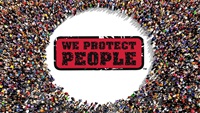
PPE: Definition, Meaning, Gear, and Equipment
Many industries and jobs have terms they shorten into acronyms to save everyone a mouthful of...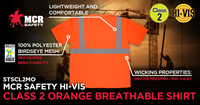
Hi-Vis Shirts: Staying Safe, Seen, and Stylish
Being visible to drivers who may not be aware of what's going on around them is critical. When...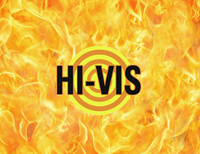
Hi-Vis FR Clothing: Reflective Fire-Resistant Clothing
MCR Safety recognizes that workers face risks of thermal hazards combined with the disadvantage...Latest Articles









